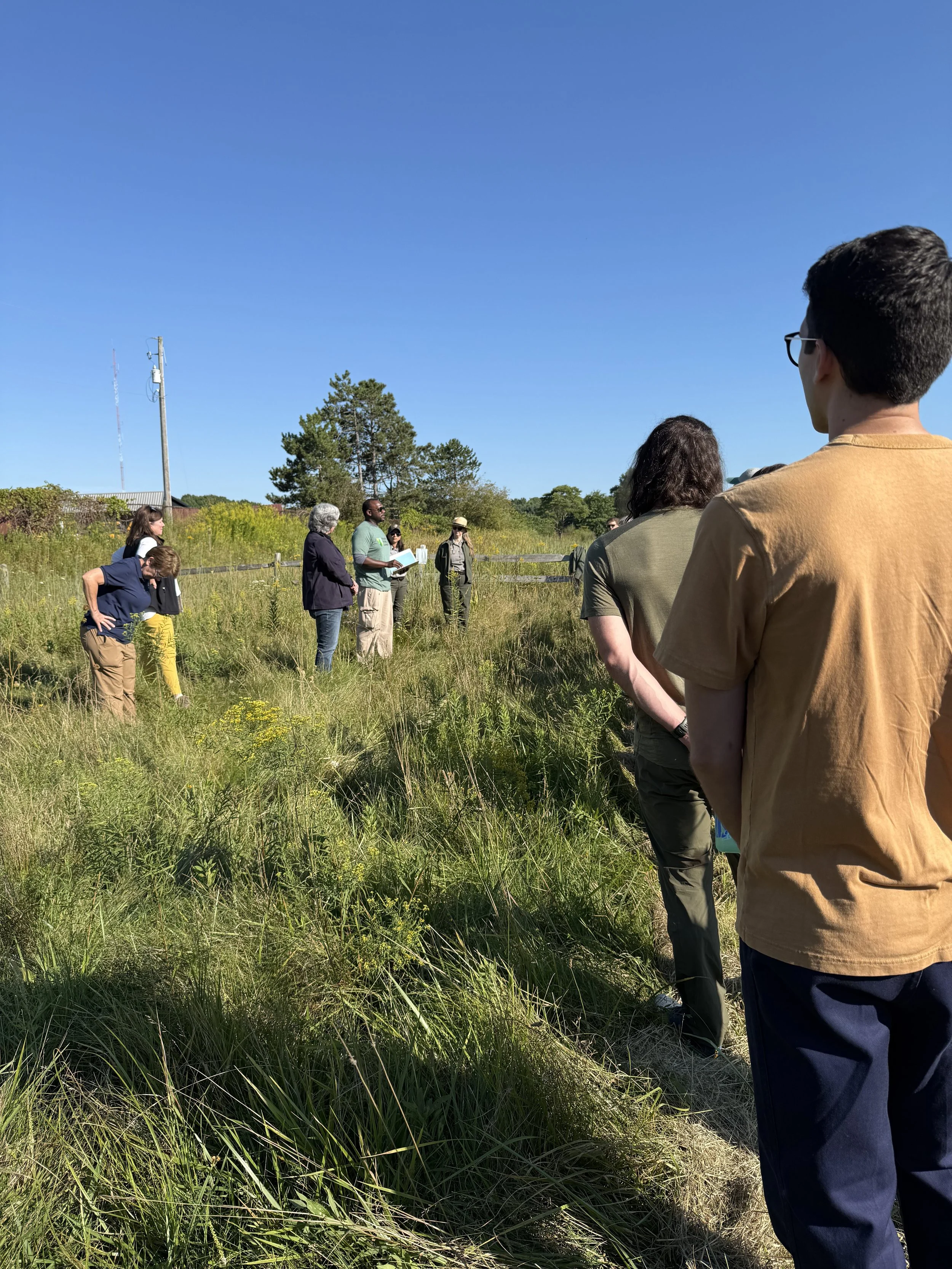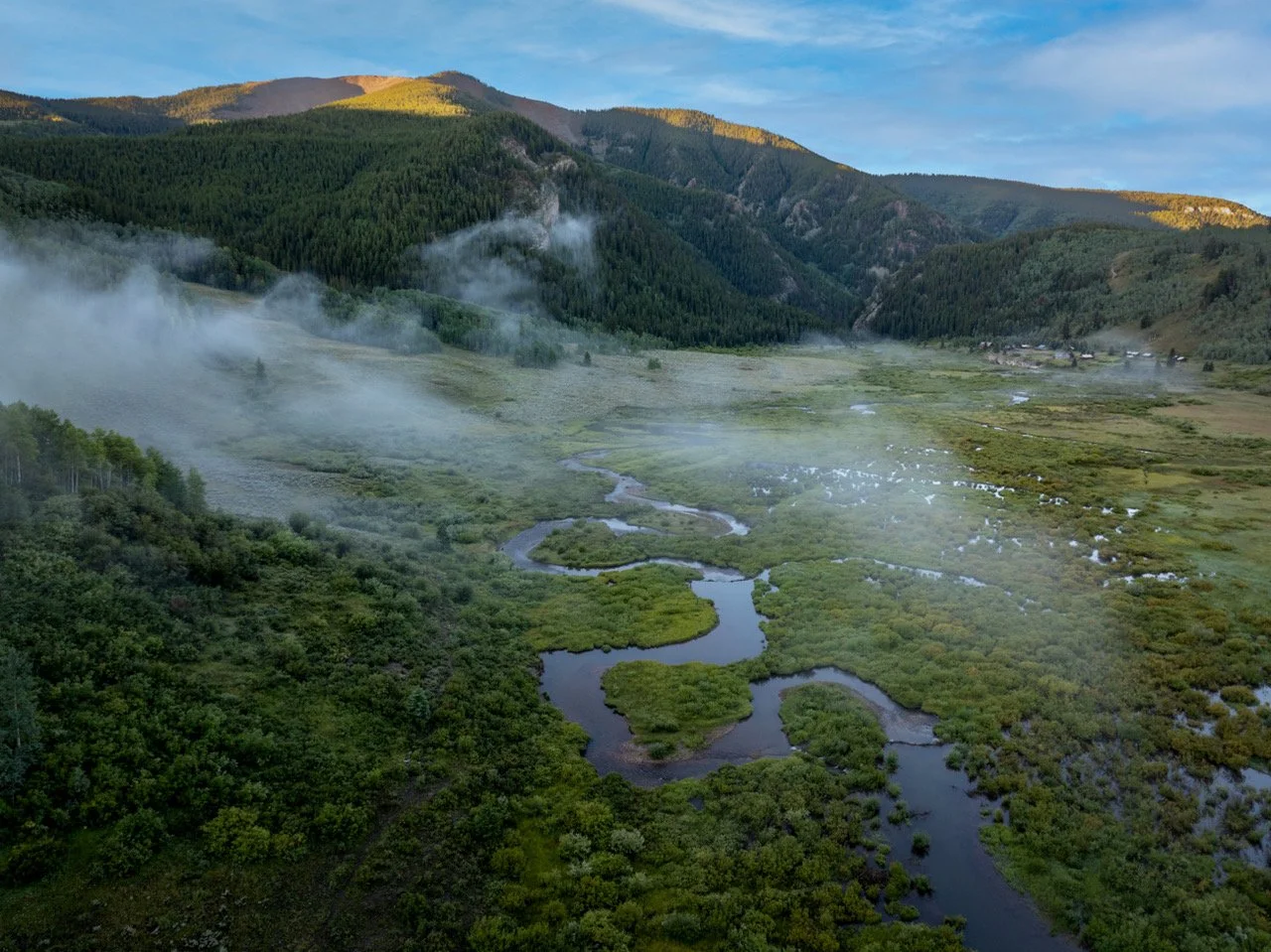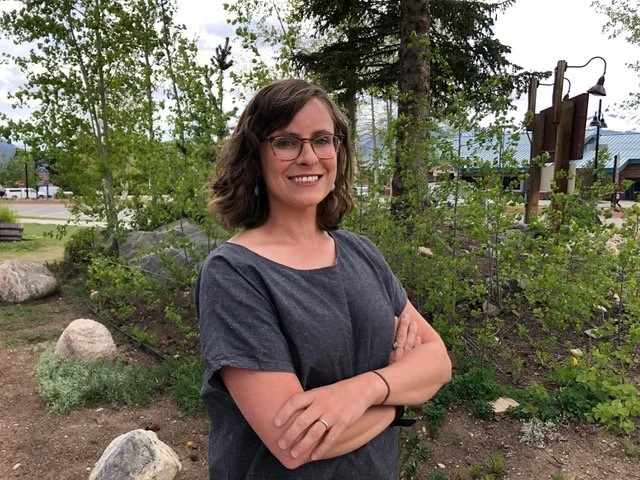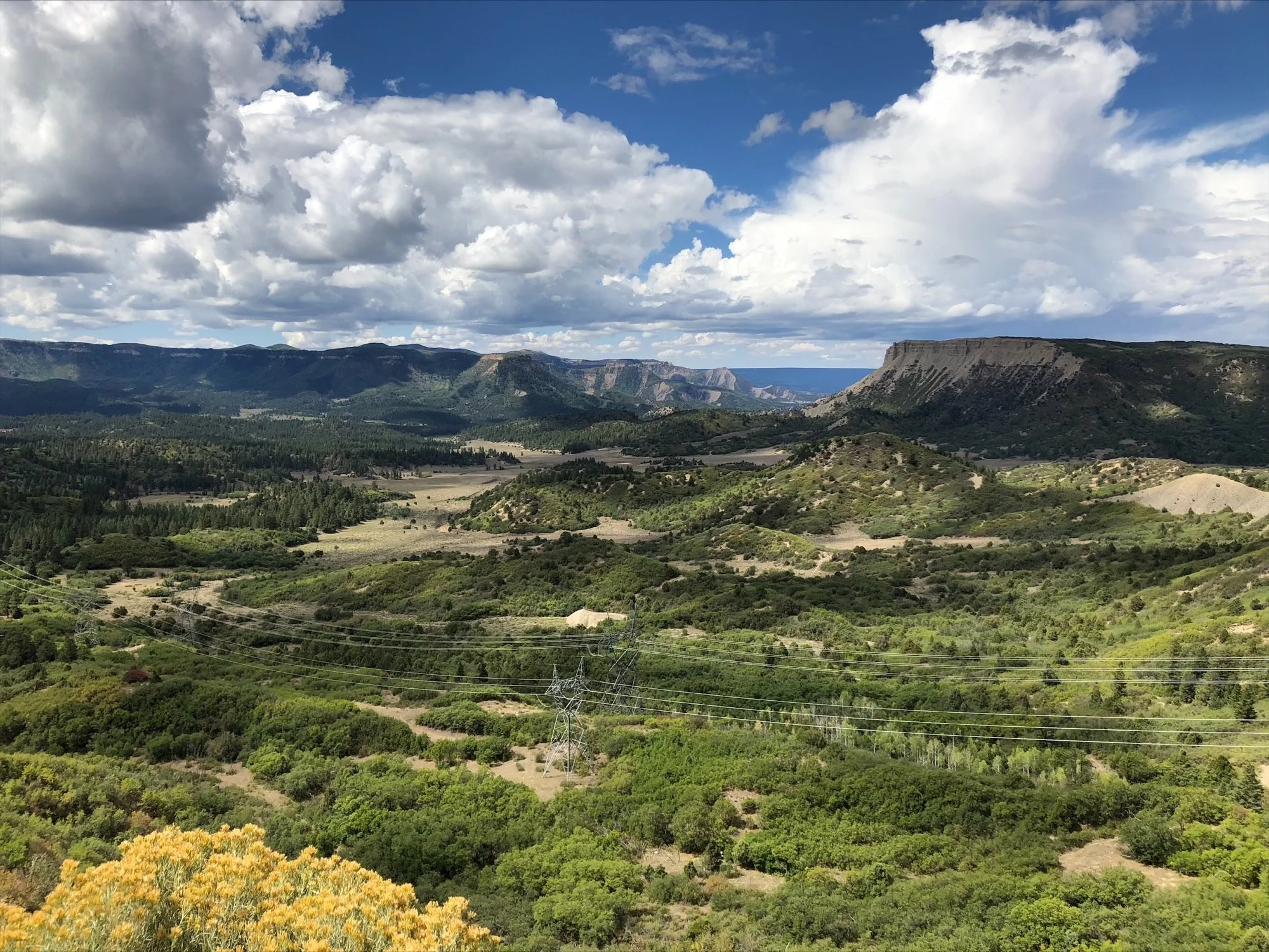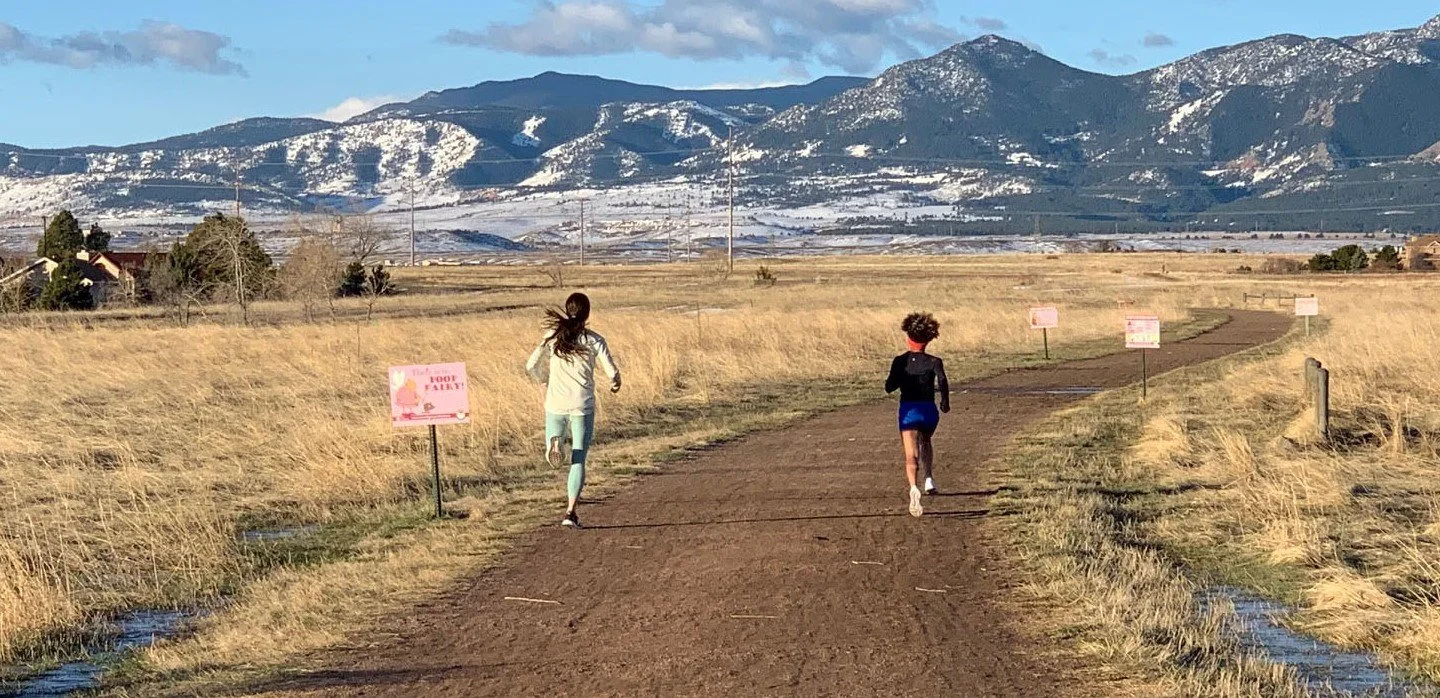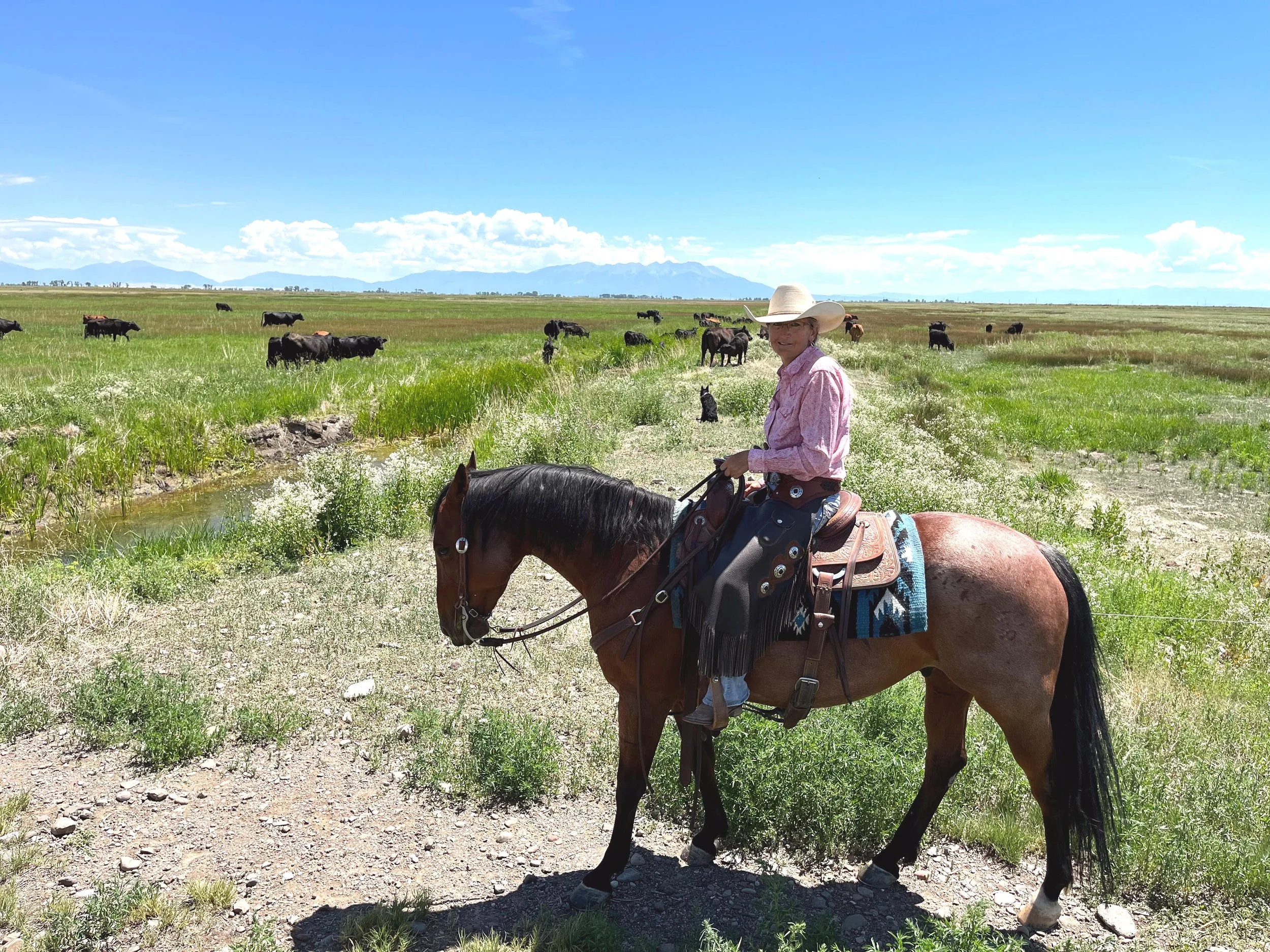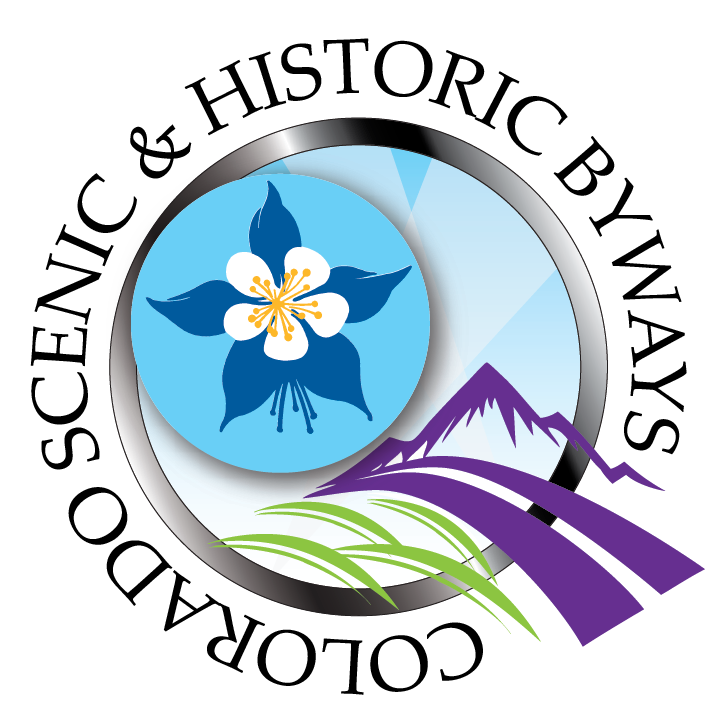We are a statewide coalition of conservation organizations. We advocate for sound public policy; provide connection and collaboration opportunities for conservation partners; offer a forum to address emerging conservation issues and opportunities; pursue sustainable funding and programmatic tools and solutions; and work to advance a culture of conservation in Colorado. With our partners, we’re working to protect these special things for Colorado: Clean water. Abundant wildlife. An outdoor way of life. Access to fresh, local food. Unblemished views of our iconic landscapes. Sustainable working farms and ranches. Enduring historic, cultural and ancestral heritage.
Our work in a nutshell.

Our statewide plan sets goals to double down on conservation. Download Roadmap | Download Executive Summary


Keep It Colorado 2024 Annual Report
Are you curious about what we were up to in 2024? Our annual report has all the highlights. We’re proud of the work we’ve accomplished with our members and partners - conservation is a community effort! Check out the latest report and past versions here.
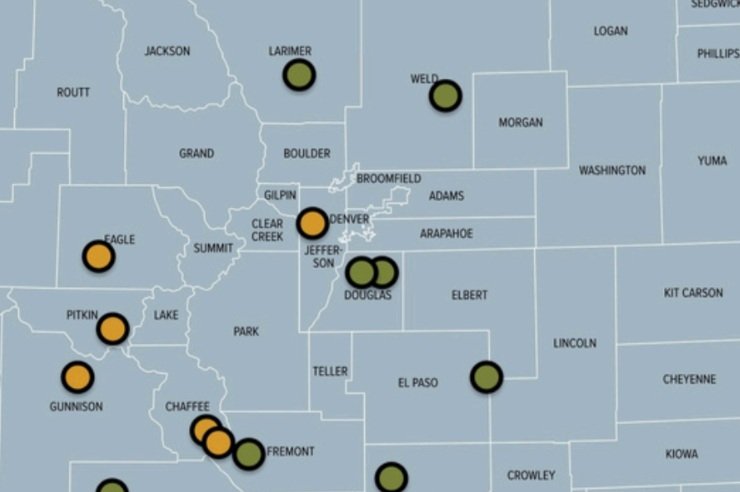
Grant distribution map

Eagle county riparian restoration

JA Ranch in Larkspur, Colorado.
Tax credits in action: Incentives that increase conservation.
“There is a pretty small area in Colorado where it’s possible to consistently produce peach crops. If land is not available in that 20-square-mile area, there are no peach farms.”
“If not protected, it would be an ideal area for ’waterfront’ housing - diminishing the property’s bird use and habitat value.”
“Focus on the values, the reasons for protecting the land, the long-term vision for the land.”
“It would be an ideal place to put in several houses. The family could have sold it to a developer, but chose not to.”
“When we did this, we were giving up the option of subdividing and making several building sites. We pursued that for quite a while and in the end really wanted to protect the land from development.”
“You can always use money, but you will never have the land again. They’re not making any more land. We need to do what we can to protect it.”
“Since that morning in 1954, I have carried with me the desire to do all I could to keep the land wild. The land trust has made it possible to fully keep our promise to Mrs. Mills and to the native creatures that call this land home.”
“If somebody is simply seeking financial gain, it is exponentially easier to simply list your property for sale. Colorado’s conservation community has made it possible for thousands upon thousands of acres of Colorado to remain for future generations.”
The Latest
Advocating for policies that help advance land conservation is one of Keep It Colorado’s key functions, and while the work is year-round, we officially kicked off our coalition engagement process at our annual Policy Summit on October 15.
In early September, the Keep It Colorado team attended Rally: the National Land Conservation Conference in Cleveland, Ohio. From biking along the Cuyahoga River to meeting with state association colleagues, the team came away refreshed and inspired.
Keep It Colorado will award $553,850 in assistance to seven nonprofit Colorado land trusts, which will support landowners who have volunteered to protect their properties through conservation. The 10 selected projects will help permanently protect 16,026 acres encompassing vital wildlife habitat, working farms and ranches.
Spring Summit always feels like a reunion, and it was such a joy to gather with 140 coalition members, supporters, and partners from May 21-23, 2025. Western Colorado University had a great space for our meetings, and the Gunnison Valley was the perfect backdrop for our land conservation event with countless examples of land conservation in action close by.
The Keep It Colorado Board of Directors today announced that Robyn Paulekas has been selected as the organization’s new Executive Director. Paulekas will begin in the role on June 2.
More than 50 partners, friends, legislators, members, and supporters of Keep It Colorado gathered on October 2, 2024 to celebrate the fifth anniversary of Keep It Colorado.
Every year Keep It Colorado convenes our members for our Annual Policy Summit. On October 2, 34 coalition members gathered in person and online to talk policy. We highlighted the outcomes of the 2024 legislative session, celebrated the coalition's conservation achievements, and discussed the outlook for 2025.
We hosted our fourth annual roundtable for public agencies on Aug. 20 in Larimer County. About 30 representatives from across the state joined us for a tour of the Bellvue-Watson Fish Hatchery; two presentations from public agencies; a networking lunch; and a tour of River Bluffs Open Space.
This summer our team made some serious tracks to visit a few of our members across the state. Meeting with our members face-to-face is a unique opportunity to learn more about their work, meet their community members, and set foot on some gorgeous conserved land.
Keep It Colorado will award $840,000 in assistance to 10 nonprofit Colorado land trusts, which will support landowners who have volunteered to protect their properties through conservation. The 15 selected projects will help permanently protect over 13,000 acres of working ranches, wetlands, water rights and wildlife corridors on land that would otherwise be at imminent risk of being subdivided or converted to other uses.
Keep It Colorado has received $1.52 million to provide transaction, planning, capacity and community engagement support to Colorado’s land conservation community. The funds are organized under two programs: the Transaction Cost Assistance Program and Organizational Advancement. They will enable coalition members to take steps in implementing Conserving Colorado: A 10-year Roadmap for the Future of Private Land Conservation.
Oh, what a week it was! Spring Summit this year (May 8-10) was an event for the books. Over 150 members and partners traveled to Morgridge Commons in Glenwood Springs for the annual convening despite snowy roads and tunnel closures. We packed three full days with a water classroom, a water lab, a field trip to Cold Mountain Ranch, learning sessions, plenty of connection and networking opportunities, and Conservation Olympics.
Keep It Colorado and the Land Trust Alliance have partnered to award nearly $160,000 in grants to land trusts and conservation nonprofits, helping them strengthen and build programs to create a more diverse, equitable, inclusive and just conservation sector and advance organizational capacity. Investments from Great Outdoors Colorado (GOCO) generously funded this initiative through Keep It Colorado’s Emerging Conservation Opportunities (ECO) program.
In the final day of the legislative session, the Colorado General assembly advanced a bill to extend and expand Colorado’s Conservation Easement Tax Credit to Governor Polis for his signature. Senate Bill 24-126 builds upon the immense success of the tax credit program by increasing the tax credit cap by $5 million for a total of $50 million annually, which will help meet the current demand and expand the state's conservation reach.
A bill to extend and expand Colorado’s Conservation Easement Tax Credit was introduced in the State Senate. Senate Bill 126 aims to build upon the immense success of the tax credit program by eliminating the expiration dates of the Conservation Easement Oversight Commission and the Certified Holder program. It also proposes to raise the tax credit cap to $75 million to meet the current demand and expand the state's conservation reach.
Colorado voters across the political spectrum say they want lawmakers to ramp up voluntary conservation of the state's privately-owned forests, farms, clean water sources and wildlife habitat - according to a new poll conducted by New Bridge Strategy on behalf of Keep It Colorado, with support from Trust for Public Land and The Nature Conservancy. Comments from Lori Weigel, principal, New Bridge Strategy.
Keep It Colorado will award $260,000 in assistance to six nonprofit land trusts across Colorado, which will support landowners who have volunteered to protect their properties through conservation. The projects will permanently protect 2,637 acres of working ranches, wetlands, water rights and wildlife corridors on land that would otherwise be at imminent risk of being subdivided or converted to other uses.
Ducks Unlimited (DU) has pledged to support Keep It Colorado’s grant program, the Transaction Cost Assistance Program (TCAP). TCAP provides financial support to Colorado’s land conservation community to help cover costs associated with conservation easement transactions, which protect land in perpetuity. Keep It Colorado will apply DU’s investment toward conservation projects that involve Colorado wetlands and benefit migratory waterfowl, shorebirds, and other wildlife and natural resources.
A new statewide survey of Colorado voters found broad, bipartisan support for continuing tax incentives for tools that enable landowners to voluntarily conserve land on their properties, and that increase available tax incentives for those willing landowners. The majority of respondents say they would also tell their state legislator to vote in favor of doubling the amount of land that can be conserved through Colorado’s system of existing tax incentives.
Across the state, counties and municipalities have ballot measures in place to support a variety of open space efforts, from trail maintenance, river restoration and wildfire mitigation, to land acquisition, wildlife protection and more. Four measures will be on Fall 2023 ballots - we summarize them, and offer a small glimpse of other initiatives already active within the state. Also available is a complete list of all ballot measures supporting protection of open spaces.
Keep It Colorado has received a grant of $25,000 from the Trinchera Blanca Foundation to help advance goals of Conserving Colorado: A 10-year Roadmap for the Future of Private Land Conservation. Trinchera Blanca Foundation’s investment will enable Keep It Colorado to support its coalition members in making progress on the implementation phase of the roadmap.
Keep it Colorado, a conservation group working with local land trusts, has received an additional $1 million grant from Great Outdoors Colorado to protect farmlands and other privately-owned lands from future development. Comments from Amy Beatie, executive director, Keep it Colorado.
Today, GOCO’s board approved the second installment of a three-year, $3-million investment in conservation initiatives supported by Keep It Colorado. The investment will advance on-the-ground projects to protect lands through conservation efforts; demonstrate the economic return on investment of conservation; and grow land trusts’ capacity to engage more people in conservation while reflecting the multifaceted interests of Colorado’s diverse communities.
The Eagle Valley Outdoor Movement is working to make access to outdoor recreation more accessible to Spanish-speaking residents. Currently, 20% of the county’s residents, many of whom speak Spanish, do not have ready access to parks and open space. Comments from Jessica Foulis, executive director, Eagle Valley Land Trust.
75 coalition members gathered in person and online to talk policy. We highlighted the outcomes of the 2023 legislative session, celebrated the coalition's conservation achievements since 2018, and heard from members about their policy priorities for 2024.
We held our annual Public Agency Roundtable in Longmont, where Boulder County Parks and Open Space treated us to a walking tour of Pella Crossing. After the tour, we met to celebrate agencies' recent successes, discuss current challenges, share updates about Keep It Colorado's latest activities, and finally, network over a delicious lunch.
After a competitive application process, Keep It Colorado and Land Trust Alliance awarded $172,000 in funds to nine land trusts for 14 projects that advance diversity, equity and inclusion and organizational development initiatives in the conservation sector.
Keep It Colorado has hired Amy Beatie to usher the organization through its next era of leadership in the private lands conservation sector. She will take on her new role August 1. Amy brings a wealth of experience to Keep It Colorado, with an in-depth background in nonprofit and government leadership, professional expertise in legal matters, and a personal passion for conservation.
In late June we held a retreat in partnership with Land Trust Alliance that brought land trust leaders together to learn, reflect, explore and set goals to move us forward in this journey. Participants came away with new insights and perspectives on their work, and set some concrete short- and long-term goals for themselves and their organizations.
Keep It Colorado will award $215,000 in grants to help four Colorado land trusts complete conservation projects in partnership with landowners across five Colorado counties. The projects will permanently protect 13,375 acres of critical wetlands and wildlife habitat, family orchards and vineyards, agricultural landscapes, water rights and rare species.
Stories: Learning from landowners.
Evan and Kim Ela had stayed several times at the organic peach farm his friend Thomas Cameron owned and operated since the early 1980s. When an opportunity arose to purchase some shares in the farm, Evan took it – but he also saw another opportunity: protecting the farm and its infrastructure so that it would always remain in agricultural production. Today, Thomas’s daughter, Gwen, is the lead farmer at Rancho Durazno. This second-generation farmer – she learned the ropes from her dad – is intentional about growing organically. But Gwen is also making the mission her own: Her innovative approach is about responsibly supporting and serving the migrant workers the farm relies on to succeed.
Anyone who has driven through the quaint Park County community of Lake George has seen the spectacular views of the South Platte River along Highway 24. Given its picture-perfect location and ample recreational and fly-fishing opportunities, the area could be a prime location for building homes or subdivisions. For years, purchasing the property – part of the historic Abell Ranch – was John Gunn’s dream every time he drove through the community. Rather than develop, however, he envisioned permanently protecting the land for the benefit of the community, the passersby and the wildlife. His vision came to fruition when he found the means to protect this iconic Front Range ranch forever.
Montezuma County is a beautiful patchwork of landscapes in Colorado’s southwest corner, and the people who live in the region are as diverse and varied as the landscapes themselves. Many of them are finding common ground in their shared interest to restore and preserve the land. In particular, three groups — the Ute Mountain Ute Tribe, Montezuma Land Conservancy and Trees, Water, People — are joining forces to protect the land and, in turn, help some members of the Ute Mountain Ute Tribe preserve the habitats and culturally important plants that play a role in their everyday lives.
Southern Plains Land Trust, located near Lamar on the southeastern plains, is focused on “rewilding” the prairie – and bison are at the center of this work. The bison are an essential contributor to a healthy ecosystem because they move across the landscape, grazing some areas more heavily and some more lightly, thereby creating a mosaic of plant communities. Bison are specially adapted to the Great Plains, feeding on the dense and deep-rooted native plant species like blue grama and buffalograss, which are abundant in the shortgrass prairie.
As Coloradans are unfortunately aware, wildfires are now a constant threat throughout the state – and not just in heavily wooded or tree-dense areas. The May family knows this all too well. They’ve been ranching and farming near Lamar, Colorado in the southeastern part of the state for over three generations. Their 16,000-acre ranch is recognized nationally for its sustainability and conservation efforts, but in spring 2022, a wildfire ripped through the Mays’ land, burning 10,000 acres – decimating the landscape and killing many of the animals that called the land home. They are investigating how to restore the land to the way it was before the disaster. It will be no small feat – though by September 2022, signs of resilience and successful restoration were already visible.
Colorado has countless properties and homes with stunning views and abundant access to the backcountry. An increasing number of them offer those things with renewable and solar energy options as well. But there are very few that check both of those boxes and provide pieces of history alongside prolific wildlife. Marjorie Westermann is proud to call one of these places home. Given its beautiful location and abundance of treasures, it’s no wonder she felt called upon to protect it from subdivision or development by placing it in a conservation easement.
For Kip Gates, there has never been a question about what he was meant to do. This fifth-generation rancher, who lives in Eagle County near Burns, was born to be a cowboy. In his day-to-day work running a 1,500-acre ranching operation, Kip is grateful for his ancestors’ work to make the family ranch what it is today. He’s also grateful the land is under a conservation easement that will protect it from subdivision or development for the long term. In addition to preserving his family’s legacy, the easement protects the land’s agricultural aspects as well as wildlife habitat for elk, deer, bears, mountain lions, eagles and, recently, moose.
While many Coloradans live within a short drive of a forested area, few are aware of the beautiful and delicate ecosystem that exists once they step into one. Beverly Parsons would like to see that change; she sees a greater understanding of the forest as a step toward fighting the impacts of a changing climate. She and her husband have seen firsthand how changes in the environment have impacted plants and wildlife - and have changed how they think about nature and wildfires after the East Troublesome fire almost destroyed their mountain home.
As more and more people are moving away from rural Colorado and the agricultural lifestyle, Montezuma Land Conservancy is cultivating the state’s next generation of leaders through a four-week agricultural program it runs for high school students. The program teaches youth about the land, agriculture and conservation. Students learn valuable leadership and teambuilding skills, develop knowledge about agricultural challenges, and gain insight into career opportunities.
Like much of the land in Montezuma County, MB and Chuck McAfees’ 2,300-acre ranch is a mix of dry farmland and rough, rocky terrain dotted with cactus, junipers and other drought-tolerant plants. The McAfees’ property is also like many others in the region in that it is loaded with important cultural sites, some as small as one square foot where a piece of pottery or footing for a dwelling was found. It’s no surprise, given the history and beauty of the land that’s been in Chuck’s family for three generations, that the McAfees consider this property their legacy and wanted to protect it from development.
“The conventional wisdom used to be that placing a conservation easement on a property devalued it by some amount. I believe in many instances, that is no longer the case. Depending on a person's perspective, I think there are folks out there who see conservation easements as a value-added feature, especially if their neighbors have one too. Easements can also help farmers and ranchers stay in business or even help newbies get into the business in a very competitive market.” – Peter Clark, rancher in the San Luis Valley.
Chris Sammons’ great-grandfather settled in the Kremmling Valley and started a ranching operation more than 120 years ago. Working with Colorado Headwaters Land Trust, Chris has created a clear long-term plan for protecting the land. But putting the land into a conservation easement wasn’t something the family had explored until Chris’ dad unexpectedly passed away. “There were four kids but no plan on what to do. We turned to the land trust and a conservation easement to help us settle the family’s estate.”
When Deb and Mike Culig began searching for a place to retire, neither anticipated the beautiful property they purchased in Grand County would also turn them into alpaca ranchers. Yet, because the land they bought came with a conservation easement that protected the agricultural nature of the property, they ended up exploring multiple potential endeavors before taking on a pack of alpacas. Now, the couple has more than a dozen alpacas, an extensive haying operation, and a lease with a cattle rancher who grazes his herd on a portion of their land. The couple has also adopted regenerative agriculture practices.
In southwest Colorado, the town of Durango features a beautiful combination of scenic views, abundant wildlife, an outdoor-recreation wonderland, a local farming and ranching legacy, and tribal lands rich with historical and cultural artifacts and stories. But, like other Colorado gems, Durango’s popularity, combined with the effects of climate change, has significantly altered the landscape. Jennifer Thurston has seen the changes intensify over the decades. Today, she is getting help to protect an area that, without any action, would be at risk of disappearing.
For years, Karen Whitney drove past this stretch of the Yampa River, noticing the Mount Harris historical highway marker. Once a thriving mining town, the property had been closed to the public for more than six decades. Karen imagined what it would be like to protect it - and acted on her vision. “Conserving this space reverses the trend compared to the rest of the country. Wild places have been developed, but this formerly developed area is now a wild place.”
In the larger San Luis Valley, more than 50 percent of the population is Hispanic. When Josie approached Rio Grande Headwaters Land Trust to help conserve her family's ranch, it was a chance to protect this unique piece of land, and also build more relationships and trust with a community that is often overlooked in the conservation arena. And Josie was driven: "They're not making any more land. We need to do what we can to protect it.”
Highlights of our past events.
Advocating for policies that help advance land conservation is one of Keep It Colorado’s key functions, and while the work is year-round, we officially kicked off our coalition engagement process at our annual Policy Summit on October 15.
In early September, the Keep It Colorado team attended Rally: the National Land Conservation Conference in Cleveland, Ohio. From biking along the Cuyahoga River to meeting with state association colleagues, the team came away refreshed and inspired.
Spring Summit always feels like a reunion, and it was such a joy to gather with 140 coalition members, supporters, and partners from May 21-23, 2025. Western Colorado University had a great space for our meetings, and the Gunnison Valley was the perfect backdrop for our land conservation event with countless examples of land conservation in action close by.
More than 50 partners, friends, legislators, members, and supporters of Keep It Colorado gathered on October 2, 2024 to celebrate the fifth anniversary of Keep It Colorado.
Every year Keep It Colorado convenes our members for our Annual Policy Summit. On October 2, 34 coalition members gathered in person and online to talk policy. We highlighted the outcomes of the 2024 legislative session, celebrated the coalition's conservation achievements, and discussed the outlook for 2025.
We hosted our fourth annual roundtable for public agencies on Aug. 20 in Larimer County. About 30 representatives from across the state joined us for a tour of the Bellvue-Watson Fish Hatchery; two presentations from public agencies; a networking lunch; and a tour of River Bluffs Open Space.
This summer our team made some serious tracks to visit a few of our members across the state. Meeting with our members face-to-face is a unique opportunity to learn more about their work, meet their community members, and set foot on some gorgeous conserved land.
Oh, what a week it was! Spring Summit this year (May 8-10) was an event for the books. Over 150 members and partners traveled to Morgridge Commons in Glenwood Springs for the annual convening despite snowy roads and tunnel closures. We packed three full days with a water classroom, a water lab, a field trip to Cold Mountain Ranch, learning sessions, plenty of connection and networking opportunities, and Conservation Olympics.
75 coalition members gathered in person and online to talk policy. We highlighted the outcomes of the 2023 legislative session, celebrated the coalition's conservation achievements since 2018, and heard from members about their policy priorities for 2024.
We held our annual Public Agency Roundtable in Longmont, where Boulder County Parks and Open Space treated us to a walking tour of Pella Crossing. After the tour, we met to celebrate agencies' recent successes, discuss current challenges, share updates about Keep It Colorado's latest activities, and finally, network over a delicious lunch.
In late June we held a retreat in partnership with Land Trust Alliance that brought land trust leaders together to learn, reflect, explore and set goals to move us forward in this journey. Participants came away with new insights and perspectives on their work, and set some concrete short- and long-term goals for themselves and their organizations.
Keep It Colorado held its annual Spring Summit in Glenwood Springs in May. Roughly 90 coalition members and partners joined us for the three-day event which included field trips to nearby conserved land, a conservation showcase, learning sessions, trivia, and ample time to connect with friends and colleagues.












